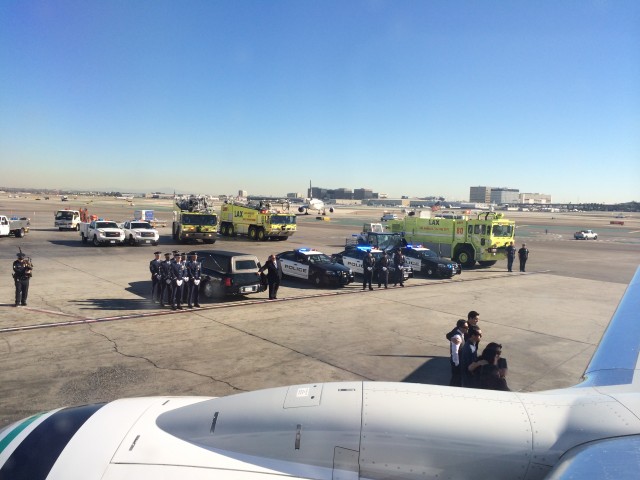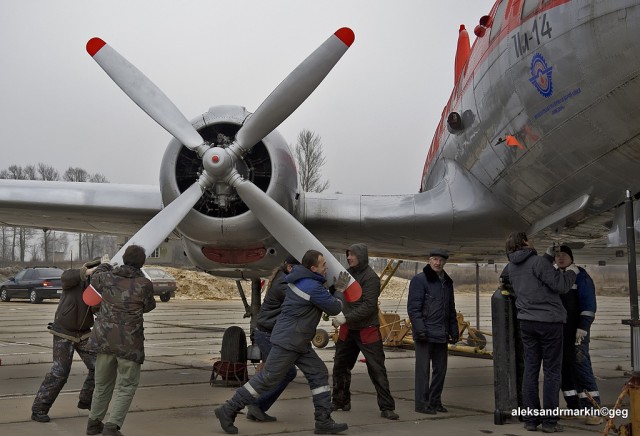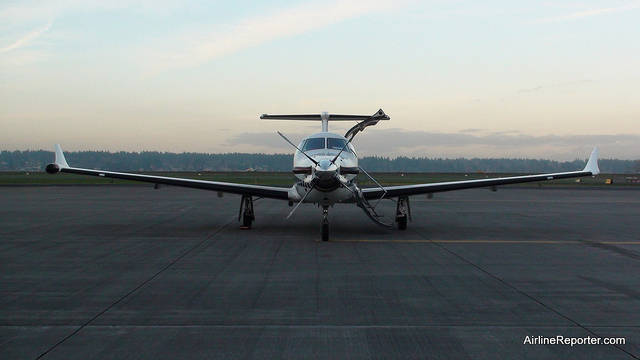
SeaPort Air Pilatus PC-12 parked at Portland
This story was originally published on NYCAviation.com and shared with permission.
The more hours you have in your logbook, the cleaner your shirt is. By the time a pilot gets to the captain’s seat at a commercial airline, he or she has spent years wearing a white shirt while doing blue collar work, but their passengers will never know to what extent. Blue collar is not the image the public sees. What they see is a white uniform shirt with icons and symbolism dripping from the pilot’s shoulders and chest announcing experience, but it really represents the unglamorous hours spent behind the scenes, drenched in fuel, coffee, oil, and blue juice.
From the first flight lesson to pre-flighting a heavy, pilots get used to wearing (and avoiding) petroleum products. Sumping fuel tanks, wiping dripping brakes, checking hydraulic and oil levels, and brushing up against leading edges smashed with bug guts all while keeping a white shirt clean is a learned talent; by the time pilots start flying corporate, they have it perfected.
Corporate passengers don’t realize that it’s sometimes one of the pilots who had to jump on a tug and move the aircraft out of the hangar onto the ramp. In the winter, pilots have also shoveled and plowed snow in front of the hangar. Then, the pilots have not only pre-flighted and prepped the aircraft, checked the weather, filed a flight plan, made the coffee, loaded the ice, soda, snacks, newspaper, magazines, and catering, but they’ve also cleaned the wastebaskets, checked the lavatory blue juice levels, and made sure there was enough toilet paper. Very glamorous.
Excerpt from NYCAviation is written by Eric ’œCap’n Aux’ Auxier, who is an airline pilot by day, writer by night, and kid by choice. An A320 captain for a major U.S. airline, he is also a freelance writer, novelist, and blogger (capnaux.com).
I recently experienced one of the greatest and most heart-rending honors a modern airline pilot can have: Captaining a flight that is transporting a fallen soldier to his final resting place.
Escorting the hero was a military honor guard consisting of two of the soldier’s comrades, and two young Marines. Also onboard were the man’s father and a lovely, devastated young woman -girlfriend? Wife? Sister? I never found out. I never learned the soldier’s name, either. Or his rank. Or how or where he died.
But it didn’t matter. Because, like the Tomb of the Unknown Soldier, he was ours. He was us.
Coming on the heels, as it was, of the Aurora movie theatre tragedy, this flight was particularly poignant for all passengers and crew as well.
As soon as our preflight duties were finished, I ordered the gate agents to allow the party onboard. They were escorted down to the ramp, where they presided over a short ceremony as the casket was loaded into the forward cargo hold. Simple, precise, and crisp, the military detail saluted the casket then made a sharp about face to march away, reminding me of the Missing Man Formation often flown by jet fighters.
For six hours as we crossed the country, I contemplated my speech. As Captain of the flight, I was expected to say a few words upon arrival. At Top of Descent, I took a deep breath and keyed the PA:
’œLadies and Gentlemen, this is your Captain speaking. I’d like you to pay special attention to this announcement. (pause) Today we have the great, great honor of escorting one of our fallen soldiers to his final resting place.
Continue reading Memorial Day: Flying a Fallen Hero on NYCAviation.com
Excerpt was written by David J. Williams, who is a former airline captain and currently involved with aviation safety, on NYCAviation.com.
For many of us, our first understanding on how to start an airplane was when Bugs Bunny started the engines of the ’œWorld’s Largest Airplane’ in Hare Lift (FF to 2:04). With a simple push of a button, all of the radial engines were up and running. And as ridiculous as that was, in the sixty years since, starting the modern jet engine has become just as simple as that.
In the Beginning
A century ago, when the Wright brothers started up the four-cylinder engine on the Wright Flyer, they did so by hand. This was the method for the farm tractors, motorcycles, and automobiles of the time, as the electric starter was still several years away. Even had the Wright brothers had access to an electric starter, they likely would have rejected it to keep the weight and complexity of the Wright Flyer to a minimum.
Even after the electric starter became available, during the several decades following the Wright’s flight, the majority of the airplanes produced chose to reject the heavy and expensive electric starter and relied on the pilots hand-propping their new airplanes. Though it seems to be highly dangerous, it is a safe with proper training.
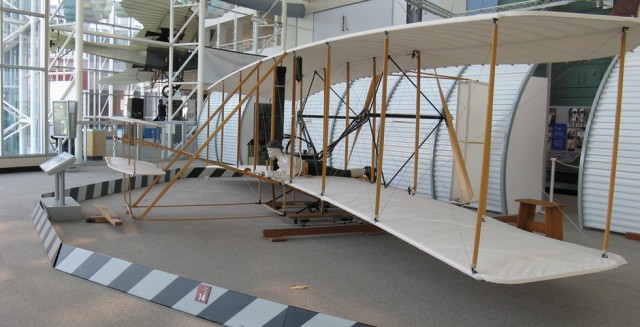
Replica of the Wright Flyer at the Museum of Flight – Photo: MoF
When hand-propping an aircraft, the person outside is the one in control, though the pilot will typically direct the sequence. The engine will then be turned over several times with the ignition off to purge the cylinders of stale air and oil, which is especially critical on radial and inverted engines. Gasoline will then be either poured directly into the intake manifold, or injected with a small hand pump in the cockpit. The person propping then checks the security of the brakes by pulling and pushing on the propeller, and then calls ’œContact!’ instructing the pilot to turn on a magneto. The term contact is often used to better differentiate between the calls of having ignition system on or off; Contact is used to denote Magneto (or Mag) On, and not to be confused with Mags Off.
The propeller would then be pulled through one compression stroke at a time with the magneto on. When the engine started, the pilot would then resume control of the airplane – adjusting the throttle for proper idle, switching on a second magneto, checking oil pressure, and completing the start procedure from memory.
Continue reading The Evolution of Engine Starting: From Hand-Propping to Button Pushing on NYCAviation.com
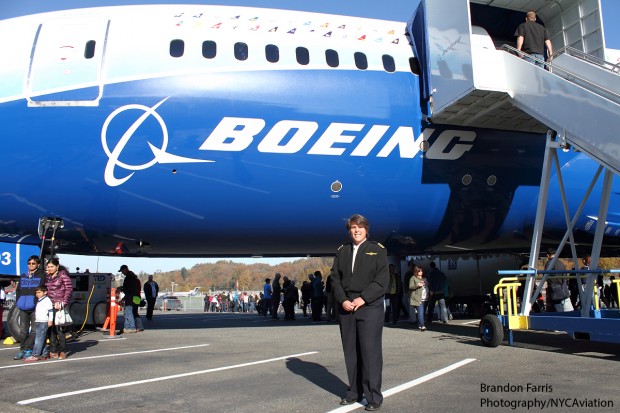
Captain Heather Ross stands next to ZA003 at the Museum of Flight
(Editor’s note: During the festivities surrounding the recent 787 test model handover at the Museum of Flight in Seattle, NYCAviation was granted an exclusive interview with Heather Ross who is one of the head 787 test flight pilots.)
NYCAviation (NYCA): Before the Dreamliner, what other aircraft did you fly?
Heather Ross (HR): I flew on the 737 program as the production chief pilot for Boeing, but overall I have flown on the 747, 757, 767 and 777. Before I joined Boeing I served in the Air Force in the T-37 and T-38 training aircraft before switching over to the C-5 Galaxy as my main mission plane before I transitioned to the C-141 Starlifter. After that I joined United Airlines flying the 747 and 727 as a flight engineer before getting upgraded to a first officer on the 737.
NYCA: So out of all those airplanes, which has been your favorite?
HR: Oh gosh, that’s a tough one. There is a real tendency under the wing of this airplane (ZA003) to say this airplane. It’s a great airplane; it really is. I love this plane but I love the 737 too, so it’s really a tough choice.
NYCA: How does the Dreamliner compare to other Boeing aircraft, and what’s it like to fly the dream?
HR: It’s named appropriately, for one; the aircraft really is a dream to fly. It’s very easy and makes all of us pilots look good. The flight controls do a wonderful job of basically rejecting turbulence and upset so the ride is very, very smooth. Since we’re standing under the Dreamliner, it’s obvious we’ve flown this airplane all over the world; in fact, a couple times around. I can tell you even on 16- and 17-hour flights I don’t feel as fatigued as I would on any other airplane. The cabin pressure is much lower, and the humidity is much higher so you don’t feel dried out. It’s just a real comfortable plane to fly not only as a crew member and pilot but also as a passenger.
Continue reading On the Flight Deck with 787 Test Pilot Heather Ross on NYCAviation.com
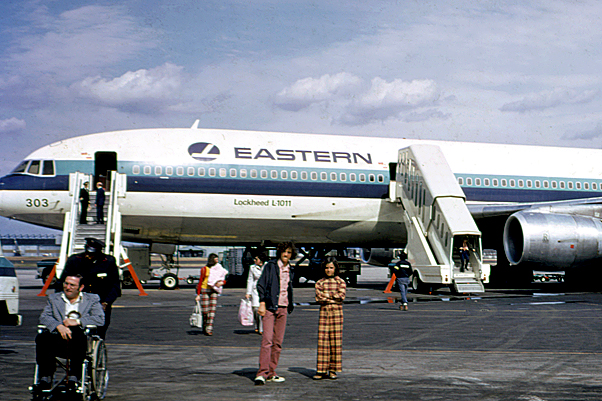
An Eastern Air Lines L1011 – Photo: Wiki Commons
This story was written by David J Williams on NYCAviation.com
Student pilots are taught very early on to recognize that when an airplane approaches its minimum flying speed, the airflow over the wing will begin to separate or break down, creating turbulence over the tail. The degradation of lift and the associated turbulence over the tail causes the airplane to buffet and alert the pilot to a deteriorating and dangerous situation. The recovery is rather basic ’“ lower the nose some, apply full power to the engine and let the airplane fly out of it. As it accelerates, the buffeting will end and the aircraft will safely regain both flight and controllability.
In the 1930’s, military and large civilian airplanes were being equipped with supercharged and turbocharged engines. These engines enabled to the planes to fly higher and faster than airplanes with normal engines. However, these ’œboosted’ engines required a pilot with a delicate hand on the throttles. Whereas a normally aspirated engine could run at full throttle continuously without much more than some added wear, the supercharged and turbocharged engines would run beyond the normal power limits creating excessive heat which, in minutes, would damage the engine. Only when the situation was critical could a competent pilot consider ’œfirewalling’ the throttles by pushing them to the stops and exceeding the manufacturers’ limits.
When the turbojet airliners appeared in the late 1950’s, engine heat became an even more critical issue. Firewalling these engines would result in immediate engine damage from the heat, while only providing a small gain from accelerating the engine past takeoff power. This is because the supersonic exhaust stream beyond the takeoff limit ’œchokes’ in the tailpipe and the additional thrust is lost, becoming marginal at best.
Continue reading The Disaster That Wasn’t: Saving Eastern Air Lines Flight 902 on NYCAviation.com

